Chris Baty's Blog, page 118
September 13, 2017
3 Ways to Harness a Passion That Will Propel You Through NaNo
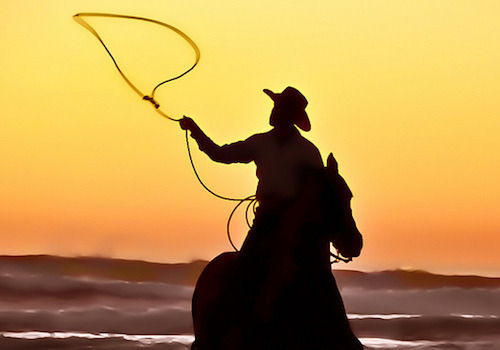
As we dive into the NaNo Prep months, it’s time to start considering what kind of novel you would love to devote 30 days to. Author Denise Jaden writes in encouraging fellow Wrimos to channel their personal enthusiasm, which will go on to intrigue readers as well:
Whenever August and September roll around, I begin feeling panicked about The Right Story Idea. Starting the NaNoWriMo challenge with a blank page and a silly idea you came up with over your fifth glass of wine one night may seem fun for days one, two, and maybe even three of November, but what is a writer to do when the fun and brilliance and drive for that idea starts to fizzle? How on earth will you make it through the other twenty-seven days?
Here are a few keys to figuring out how to harness your passion in what you love, connect to, and want to read:
1. Say goodbye to “should”.First, get rid of all the “should”s in your writing. If your inner mantra is telling you, “I should write this idea, because it’s been on my hard drive waiting for me for twelve years,” or “I should write about mermaids/vampires/time travel/brutal murders because that’s what’s hot right now,” there’s a good chance those ideas are not going to fuel your passion and keep you writing.
In her motivational book Get It Done, Sam Bennett suggests writing a “Could Do List.” For instance, if you had unlimited time and resources, what might you want to write about? What if you were guaranteed a bestseller, no matter what the subject matter? What would you choose then? Make this list, while understanding that you are under absolutely no obligation to follow through with any of these ideas. This is not a to-do list. It is a dream list that reveals what’s inside you.
2. Ask yourself some questions.In your journal, answer the following questions: When do you feel most alive? When have you felt most in love? Most enraged? What motivates you? What wrecks you emotionally? What angers you most? Harness these feelings and memories to find new ideas, or use them to sift through ideas you already have.
3. Define your purpose.Write a mission statement for your writing and for your life. By putting these ideas to paper, you define the purpose that guides your writing. What is most important to you? What do you hope to focus on and bring across on the page? What do you hope to make readers feel?
This mission statement can be worded in any way you like, but consider writing it so it answers questions like these:
How do you envision affecting, improving, or enriching your reader’s life with your writing?
Ideally, how do you want your writing to change the world in a meaningful way?
How does your writing benefit you? Is it cathartic? Does it enrich your understanding of the world? Does it add to your income?
As you discover new facets of yourself and new things that inspire your passions, insert those ideas and motivations into your story plan (you can even check out my website for a Story Plan template). At the end of the day, you want your stories to make readers feel as inspired as you felt when you first conceived them. Do your stories make you feel passionate? Do they inspire, entertain, invigorate, teach, or enlighten you? Have they helped you solve a problem? If you want them to do the same for your readers, they must first do all those things for you.

Denise Jaden is also the author of the NaNoWriMo-popular guide, Fast Fiction, and several popular fiction titles. For more inspiration of how to come up with story ideas, check out Denise’s new book for writers, Story Sparks: Finding Your Best Story Ideas and Turning Them into Compelling Fiction. A sought-after speaker, motivating writers to find their own best story ideas, and then stirring up the drive to write them, Denise lives just outside Vancouver, BC, with her husband and son. Find out more at her website.
Top image licensed under Creative Commons from Steve Corey on Flickr.
September 12, 2017
“Writer” is the Word: Beverly or Judy and Me
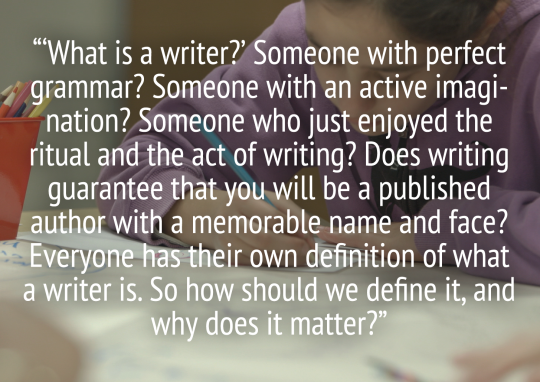
What does it take to call yourself a writer? Sometimes, using this word is a challenge and an act of courage. Writer AT Adlen shares a story about how her young self was first declared an “author” in front of someone rather famous:
When I was in fourth grade, I was told I was going to meet Beverly Cleary. Or was it Judy Blume? Either way, I was going to meet one of them, and I would never be the same from that moment on.
See, I met…one of them, under the pretense that I was a “Young Author”. This title bewildered me. I had not yet, at that age, had any real interest in writing. I stared at my teacher when she gave me the news, that not only was I a writer, but also that I might meet a famous one.
If the skin on my forehead had not been too young to wrinkle as I scrunched up my little uncertain face, she might have read my hesitation. Nevertheless, I had little control over my destiny back then, so I shrugged and went along with it.
Of course, I now understand the inherent novelty of being called a “Young Author”. The only obligation was to create what amounted to glorified coloring books. A story from our own imagination, combined with drawings to match said imaginative story. This would be bound with painters tape around a plastic, makeshift hardcover. Two titles, one on the front cover and one on the spine. Finally, a UPC code for looking it up in the library’s card catalog. This meant these horrifically creative masterworks would be accessible to the entire elementary school student body.
I decided to write the story everyone thought I was going to write. A story about a princess in a castle. Funny thing is, she wasn’t rescued by a knight and carried off on a white horse. No, in the story, she rescues herself. Just kidding, in this story, the princess traveled from room to room telling her guests about the features of the room, and why one of them should buy it. They needed to take the musty old castle off of her hands so that she doesn’t have to clean it anymore. My teachers thought this was brilliant. I wasn’t sure what I had done, but I loved drawing those castle pictures.
It might have been Judy Blume. For some reason, the name Judy Blume just sticks out to me. I had so many questions for Judy. Why would a famous “author” visit an elementary school during her downtime? Is this what a writer does? How do writers behave, spend their days? This concept overwhelmed and fascinated me. I had a sudden and constant wondering of what a writer was, and if I was one. Even as Judy spoke, I was consumed with this question. I’d written a “book,” and I can’t lie, I felt a little tingle of positive reinforcement. Did this make me a “writer”?
In the thirty years that passed, I think little of the author I met, and more about the absurdity of meeting them. Especially today when I witness the surprise on people’s faces when I tell them that I am a writer. What makes me a writer? All along, I have always asked teachers, professors, fellow writers, to others in the arts and those who have no interest in writing: “What is a writer?” Someone with perfect grammar? Someone with an active imagination? Someone who just enjoyed the ritual and the act of writing? Does writing guarantee that you will be a published author with a memorable name and face? Everyone has their own definition of what a writer is. So how should we define it, and why does it matter?
After years of trial and error, and questioning and researching, I came upon my answer. I believe it isn’t attention, or accolades or being singled out makes you as writer. It is simply the act of writing that makes someone a writer. And that name means very little when it comes down to the dirty work of actually writing. I think the writing must be thoughtful. The kind of writing that is required for an improvement of sanity, or a story that needs to be told or it will shrivel up and wither away. I’m not sure if other people are wired this way, but those who are must benefit from the collecting their thoughts and archiving them, which is what I believe a writer does and always should do.
In a very basic way, people try to make the words writer and author interchangeable. To be called an author means you have written, not that you still write. When we are children, author seems such a lofty title. If we are avid readers, authors are celebrities. I’m not sure I was ever a “young author”, but I know that I was and always will be a writer.
AT Adlen isn’t her real name. An avid traveller, and diligent fiction writer, AT is living happily in Pennsylvania close to where she grew up. And life is just starting to get interesting.
September 8, 2017
Fall is in the Air… It’s NaNo Time!
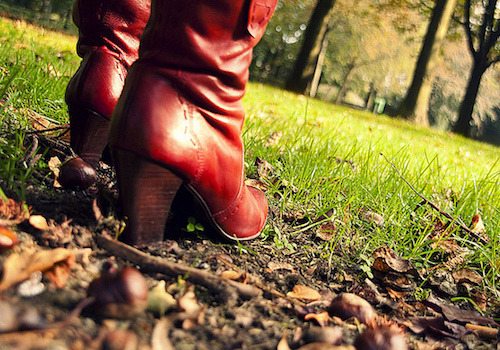
As we begin to dive into NaNo Prep season, we’ve talked to some participants to get the inside scoop on how to best prepare for November. Today, author Jacqui Jacoby shares her NaNo Prep timeline:
I started with NaNoWriMo back in 2001 on my daughter’s encouragement. I was then still a struggling writer trying to make it in the world of publishing. (Highest rejection count? Fifty-seven on one book alone. And eventually, that book came out in 2013.)
There came a point in my NaNoWriMo journey where it wasn’t necessary to keep participating to get my books going. I had a handle on that aspect: the ideas, the characters, the planning. And yet, I still showed up every fall like clockwork. I’m still here. Every year on October 15th, I hear the sound, the excitement of what is coming. It’s the trumpet blaring, the horn alive…as I start to plan out my November:
October 15: Read No Plot No Problem, starting October 15th.October 16: Consider the prize I will get myself if I “win”. Research it, order it, when it arrives, place it where I can see it as I type.
October 16: Stock up on supplies: Altoids, eye drops, Double Shots.
October 20: Purchase the WIP Notebook by Jeannie Ruesch and Ready. Set. Novel! By Chris Baty.
October 18: Do not plan for “extra” appointments. Cancel every “essential” appointment to gain time. Tell the world I am not available for November and then stand by that decision.
October 20: Buy Supplies: Super Glue Stick and Brand New Special NaNo Only Pencil to be used in filling out books.
October 23: On arrival of background books (WIP/Novel!), use both books to start putting reality to the ideas. Print out faces I think go with the characters. Use both glue stick and pencil to mark up your pages. The more marks, the better.
October 25: Update my NaNo profile on the NaNo site. Upload my novel idea. If you have an idea on the story, upload either a working cover or just a picture you like that looks like your story. It is always fun to have a cover or photo to post.
October 26 through 28: If you bought your No Plot, No Problem Writing Kit, have friends and family over for dinner so they can witness you sign the enclosed contract, binding you to dare to try not to write. Post where you can see it. Use the coupons in the kit to entice people to sign up in support.
I’ve been in sixteen NaNos, and I’ve “won” nine times.
The other times, there have been some very compelling cases of life kicking my butt. One year I got sick, really sick and my imagination was slammed. Another year, we were moving. I tried to keep it going, but boxes and unpacking won out. One year, yeah, okay, I just didn’t feel like it and I gave up quick. While another year, I didn’t feel like it and I gave up late.
But I always come back for the next year.
I started NaNoWriMo as a newbie writer, hoping to get my big break. Being in NaNo propelled me forward as it taught me more about characters and plot. I recommend it to every new writer I am working with.
I gave a speech last year to a small group, encouraging even the non-writers to participate. Then I signed into the site with my new book idea, and started planning. Today, for me, NaNo means freedom from traditional deadlines for a whole month. It means I get to play in a new story with new people – both imaginary and real – and for thirty whole days, my world is nothing but writing.
Jacqui Jacoby is an author of several books and short stories and managers her career and her own firm Body Count Productions, Inc. She is a workshop presenter who has appeared both live and online to give such classes as “From Austin to Aliens: How to Create Classic Tough Chicks” and “Behind the Scenes: The Research Before the Book.” First Place Winner of the Daphne du Maurier Award in Excellence, as well as the Suzannah and the Dixie for her books, she is a RWA Golden Heart Finalist and the author of numerous articles which have appeared in newsletters and on blogs around the word. Find her on the web here or on Twitter.
Top photo by Flickr user *Lie, sourced through Creative Commons.
September 6, 2017
Tell Me What You Want: Uncovering Your Character’s Driving Motivation

As we dive into NaNo Prep months, many of your Wrimos may be thinking about what what will drive your plot to 50,000 words. Author Dinty W. Moore has an answer: find what your character wants, then dig even deeper. Discovering your character’s deepest desires can propel the plot of your whole novel.
There is not much time to reflect when you are trying to write an entire novel in one month, but, unless I’m mistaken, you’re allowed to think about your novel before NaNoWriMo officially launches on November 1st.
So what should you be thinking about during NaNo Prep season?
You would do well to heed the guidance of novelist Kurt Vonnegut, who once advised, “Every character should want something, even if it is only a glass of water.”
As simple as that seems, the urgent desire of your main character, and how that desire either corresponds or conflicts with what other characters want, is what drives every successful plot, from Jane Austen’s Pride and Prejudice to Stephen King’s Misery.
So, what does your main character want?
On page one, it may just be a glass of water. Or maybe a gin and tonic, if it’s been a bad day.
But the thirst has to go deeper quickly, and the glass of water must come to represent a basic human aspiration, fear, or desire within the first few pages.
Maybe your character wants a lot of things—new shoes, a clean suit, a ride into Cedar Rapids, a job interview, a paycheck. That’s fine, but what do those desires represent? What journey is he about to take, and what obstacles are going to slow him down? I can imagine a number of plot currents that might flow underneath the story of the young man who wants new shoes and a ride into Cedar Rapids. It might be the need to battle self-doubt brought on by childhood trauma, a reaction to his father’s harsh and constant criticism, a secret dream to live a life far different than the one for which he seems destined on the family farm. Something universal. Something others have felt as well.
“If you can’t define what it is your character wants, then you likely have no real story.”Or perhaps your novel will be fantasy-based, and what your character wants most is to kill that dragon—the big, smelly green one who shoots flames out of his mouth and scares the bejeebers out of everyone in the village. Maybe your character wants that dragon dead because her parents, grandparents, nieces, and nephews live in that village, and she hopes someday to raise her own family there. Maybe what your character really wants is a life not dictated by fear. We all want safety, for ourselves and for our loved ones, and we all battle fears large and small, so your reader—even if she lives in a world where dragons don’t roam free—will feel the primal connection.
Big or small, frightening or inspiring, you need to identify some primal concern or desire in your book, or else the hundreds of pages you write run the risk of being just a series of events, and readers will quickly lose track of why they are reading.
If you can’t define what it is your character wants, then you likely have no real story.
So, start thinking now:
Who is at the center of your book? What does he or she want on page one? What does he or she want that represents some deeper, more universal desire shared by human beings (and readers) everywhere?
Knowing this last element—where the character’s story and struggles will connect directly with other readers, other human beings—will allow you to write a book where every scene, every line of dialogue, each turn in every chapter, makes sense, moves the story forward, and gives the reader an emotional connection to your words and descriptions.
And that is what makes readers turn the page.

Dinty W. Moore is author of The Story Cure: A Book Doctor’s Pain-Free Guide to Finishing Your Novel or Memoir and many other books. He has his work in The Georgia Review, Harpers, The New York Times Sunday Magazine, The Normal School, and elsewhere, and has won numerous awards for his writing, including fellowship from the National Endowment for the Arts. You can find Dinty at www.dintywmoore.com and on Twitter as @brevitymag.
Top image licensed under Creative Commons from Eigirdas on Flickr.
September 4, 2017
The End and Everything Afterwards: A Goodbye to Intern Emily
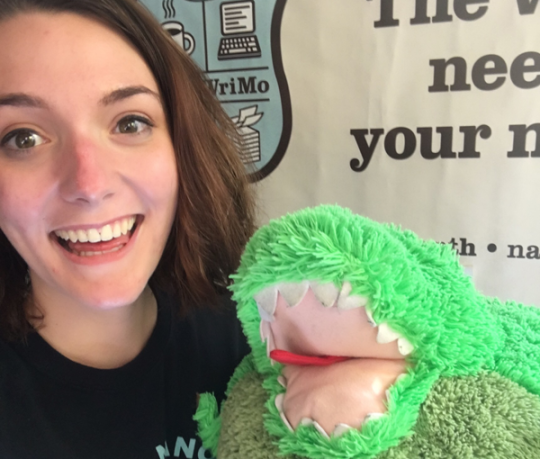
Summer is drawing to a close, and it’s time to wish our interns farewell as they move on to share their awesomeness with the rest of the world. Before heading back to college, Emily Ehret, Editorial Intern Extraordinaire, writes in on the blog one last time to share how she handles endings in her writing and her personal life, especially when unexpected challenges come her way:
Us writers and our endings. We often spend so long agonizing over getting them just right. Sometimes, it takes us ages to pin them down. Can we ever really satisfy ourselves with an ending? How do we get it exactly right? How do we know when it’s over?
This summer, though, there were a couple of things I was certain of: I knew the ending of the novel I worked on for Camp in July, and I knew the end date of my internship—August 30th. So I knew exactly how long I had to work on my word count and get the most out of my summer at NaNo HQ. In some fantasy of productivity when I arrived here in June, I was certain I would write that ending before saying an elegant farewell and hopping back on a plane for Chicago.
August 30th is here, just as I always knew it would be. But what I didn’t fully expect was all the accompanying emotions.
Surprise! My ending isn’t written. With my draft coming in at around 35,000 words, I’m probably not even halfway there yet. Since my final plot point was planned, I thought the draft would fly off my fingers. I thought I would hit 50k and beyond with few obstacles. But throughout Camp and the rest of the summer, my writing pace was more like a fumbling stroll than a determined run. What was going on with me?
I realized, over time, that coaxing out the emotional arc of my story was going to take a lot more work and time than I thought. Just because I could visualize my book’s final pages didn’t mean that I knew the feelings my characters needed to experience to get there. In some ways, I made it more difficult on myself. Interning and exploring a new city all while living alone was a challenge, and definitely something that took up a lot of my focus. I wasn’t always working on my characters; I was working on me. And that, I decided, is okay. These experiences were well worth it.
While I didn’t grow my word count as much as I would have liked, I personally grew from a summer full of new experiences, my time at NaNo HQ being one of the best. Even time I came into the office or logged onto @NaNoInterns, I had special insight into the community of writers that keep me coming back to NaNoWriMo year after year. I have so much admiration for the all the staff members I met, the bloggers I worked with, and the writers I talked to during VWIs, and it’s hard to have reached the end.
Even though I know it’s the end of my internship here, I’m sure the time I spent with such wonderful Wrimos will keep influencing me and my writing for a long time to come. I may not have written that “perfect” ending yet, but I’m extremely grateful of all the memories I have from my summer here. They will definitely shape many stories to come.
Signing off and as always, wishing you very happy writing,
Intern Emily
September 1, 2017
Never Fear... NaNo Prep Is Here!
 Hey Wrimos, did you know that NaNo Prep season officially kicks off today?
Hey Wrimos, did you know that NaNo Prep season officially kicks off today? Now’s the time to start preparing to write your novel in November. We’ll be providing plenty of help to get you started on this blog, but be sure to check out our other resources on the NaNo Prep page, and to keep an eye out for webcasts and other announcements on our calendar. You can also hop into the forums to chat with other Wrimos about anything writing related… or really, just anything!
Oh, and be sure to pick up some cool NaNo flair for your social media sites.
August 30, 2017
NaNo Interview: YWP Poster Designer Brad Woodard
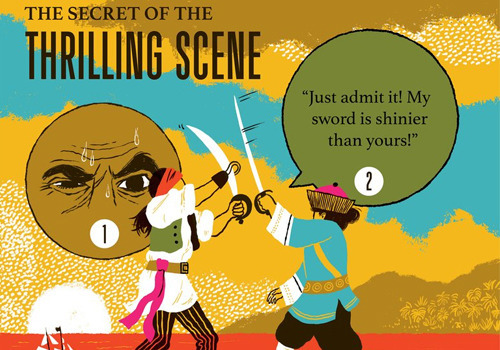
This year, we have newly-designed posters for our Young Writers Program kits that we send out for free to classrooms around the world! The posters were designed by Artists for Education, a project of design and illustration studio Brave the Woods, run by Brad and Krystal Woodard. Today, we’ve interviewed graphic designer Brad Woodard about his design process for this project:
The first, and most important, thing I do when starting a project for a client is to collaborate. Working hand in hand with the client I can learn not only what they want, but more importantly, what they need. I take a lot of time experimenting and playing around with ideas and I want to make sure the client is part of that process. Then I start looking for inspiration to help me nail a specific style and feel. For this specific poster about creating a thrilling scene, I was inspired by vintage adventure books. It helped me create an engaging poster while making sure it appealed to the correct audience. We didn’t want it to skew too young. Creating work for clients takes collaboration and a lot of play.
2. How did the idea for Artists for Education come about, then get turned into a reality?My wife and I have always been interested in children’s education, especially now that our son has just recently started kindergarten. We had done a lot of research into the type of education we want our children to experience. In the end we wanted to them to attend public school but we discovered how underfunded the school and teachers were, and we wanted to help. Focusing on our community and talents we decided that we could best help teachers by providing them with visuals in their classrooms. We started with posters and are soon moving into other things as well, but the idea is that we get talented, professional artists and have them create educational artwork to be used in classrooms all around the U.S. Not only are our visuals beautiful, but they are accurate too, as all of our artwork is approved by experts in the given subject. None of this would have been possible if talented, charitable artists didn’t take the time to make all this incredible content for teachers.
3. What’s next for Artists for Education?Since launching AFE we have been adjusting and tweaking our model to make sure we are able to maximize the help we can offer to teachers. In that spirit, we are going back to having all our posters being free to download for teachers, regardless of how many have been sold. Without spilling too much, we are hoping to be bringing new products to sell on AFE in hopes to allow us to start physically donating our educational posters to teachers! And we are dabbling in educational animated videos for teachers to use as well! Big plans ahead!
4. What’s your favorite poster or character that you’ve ever drawn?My favorite poster had to be the one I did for y'all for Camp NaNoWriMo! It combined my love for outdoors and a program that promotes creativity. While being able to insert happy forest animals like my bear:
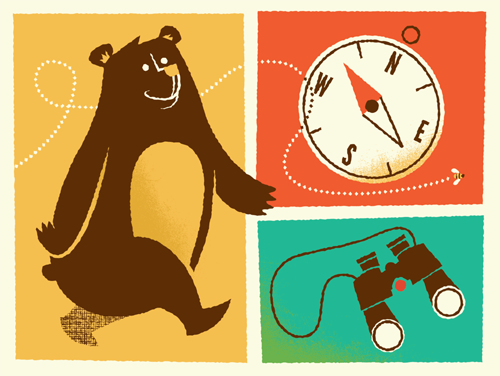
Check out Artists for Education
Instagram: @artistsforeducation
Twitter: @ArtistsForEd
Website: www.artistsforeducation.com

Brad’s passion for creating started from a very young age. He grew up doing things like drawing along with art shows on PBS, illustrating books, designing CB radio outposts in his backyard, painting portraits, and more. When he “grew up” he earned a BFA in graphic design, but his love of painting and illustration never left him. He and his wife now run the design and illustration studio Brave the Woods, as well as the educational art company, Artists for Education. Aside from from all that, he enjoys spending time traveling and enjoying the great outdoors with his beautiful wife and kids in Boise, Idaho.
NaNo Interview: YWP Poster Designer Brad Woodward

This year, we have newly-designed posters for our Young Writers Program kits that we send out for free to classrooms around the world! The posters were designed by Artists for Education, a project of design and illustration studio Brave the Woods, run by Brad and Krystal Woodard. Today, we’ve interviewed graphic designer Brad Woodward about his design process for this project:
The first, and most important, thing I do when starting a project for a client is to collaborate. Working hand in hand with the client I can learn not only what they want, but more importantly, what they need. I take a lot of time experimenting and playing around with ideas and I want to make sure the client is part of that process. Then I start looking for inspiration to help me nail a specific style and feel. For this specific poster about creating a thrilling scene, I was inspired by vintage adventure books. It helped me create an engaging poster while making sure it appealed to the correct audience. We didn’t want it to skew too young. Creating work for clients takes collaboration and a lot of play.
2. How did the idea for Artists for Education come about, then get turned into a reality?My wife and I have always been interested in children’s education, especially now that our son has just recently started kindergarten. We had done a lot of research into the type of education we want our children to experience. In the end we wanted to them to attend public school but we discovered how underfunded the school and teachers were, and we wanted to help. Focusing on our community and talents we decided that we could best help teachers by providing them with visuals in their classrooms. We started with posters and are soon moving into other things as well, but the idea is that we get talented, professional artists and have them create educational artwork to be used in classrooms all around the U.S. Not only are our visuals beautiful, but they are accurate too, as all of our artwork is approved by experts in the given subject. None of this would have been possible if talented, charitable artists didn’t take the time to make all this incredible content for teachers.
3. What’s next for Artists for Education?Since launching AFE we have been adjusting and tweaking our model to make sure we are able to maximize the help we can offer to teachers. In that spirit, we are going back to having all our posters being free to download for teachers, regardless of how many have been sold. Without spilling too much, we are hoping to be bringing new products to sell on AFE in hopes to allow us to start physically donating our educational posters to teachers! And we are dabbling in educational animated videos for teachers to use as well! Big plans ahead!
4. What’s your favorite poster or character that you’ve ever drawn?My favorite poster had to be the one I did for y'all for Camp NaNoWriMo! It combined my love for outdoors and a program that promotes creativity. While being able to insert happy forest animals like my bear:

Check out Artists for Education
Instagram: @artistsforeducation
Twitter: @ArtistsForEd
Website: www.artistsforeducation.com

Brad’s passion for creating started from a very young age. He grew up doing things like drawing along with art shows on PBS, illustrating books, designing CB radio outposts in his backyard, painting portraits, and more. When he “grew up” he earned a BFA in graphic design, but his love of painting and illustration never left him. He and his wife now run the design and illustration studio Brave the Woods, as well as the educational art company, Artists for Education. Aside from from all that, he enjoys spending time traveling and enjoying the great outdoors with his beautiful wife and kids in Boise, Idaho.
August 28, 2017
“Writer” is the Word: All of This and More

What does it take to call yourself a writer? Sometimes, using this word is a challenge and an act of courage. Writer Selma Lynn Airy tells her story of accepting this part of her identity and balancing writing with other interests:
I can’t recall when I first took a pen between my fingers and started writing. I can’t recall when the first childhood dragon-invades-plushies’-village-and-super-plush-comes-to-save-the-world story bloomed in my head. I can’t recall when I started loving words and the imagination they awaken when one hears them.
I can recall, though, how words became my best friends. But it took me a while before I called myself a writer. Even though people told me I had talent with words, the idea was far from me. I felt like bearing this grand qualification would cancel all the other things that made me who I was. As if it would take away my love for music (Linkin Park, anyone? Chester, anyone? *cries*), for stars, my angry side hiding my infinite sensitiveness, my messy inner child, and all the little things that piled up to make me… well, me.
How I changed my mind is a rather silly story, and it is all thanks to YouTube: I came across writers’ videos, and watching them I realized they were whole people, with whole feelings, actual lives, struggles, strengths, weaknesses. All of a sudden, the image of the old man trapped in a dim dark room with piles of papers and no colors in his life, the image that came to my mind when the word “writer” was uttered, vanished from my mind.
I came to the realization that I was a writer. Writer wasn’t all of me.
I realized I could be a writer and everything else I wanted to be. In fact, I soon discovered that my writer part fed the other parts of myself. Writing made me more interested in everything surrounding me. I learned and grew fond of loads of new things, from English history to the making of glass. The new symphonies I’d hear or learn how to play would become sources of inspiration. In fact, it’s always been that way. I just never realized.
So, I decided I was going to call myself a writer.
First thing you begin dealing with: people. Well in fact you’ve been dealing with them your whole life, but there is a whole new bunch of annoying stuff you’ll begin to face. You know that expressionless face that people show you when you say something weird? You’re going to start seeing it quite often when you’ll shout out “I’m a writer!” to the world. A lot of people would assume that you’ll basically starve. The alternative: the secluded image I described earlier. Because you’re a writer, all you know to do is… write. Which is completely wrong.
But here is the thing, this is solvable. Option 1: communicate. If you’re pursuing writing as a career, explain what made you choose that path, and let people agree or disagree with your choice. Show your other interests. Talk about stars, Chuck Norris, your favorite place to hang out, past experiences. This will show that you’re not that old person trapped in a dark room whose best friend is a cat and who hates everyone.
Well, maybe you are. So here’s option 2: ignore ‘em all.
But the challenges that arise don’t only concern the others, they also concern you. Once you start calling yourself a writer, you’ll begin to feel the responsibility, rather than the need, to write. Your blank page periods will begin to feel like betrayals to yourself. Your “away from my paper” times will become times of guilt. You’ll feel it like a burden, this title you began to bear. You’ll feel like you have to stay true to it all the time.
And you do, just relax.
Being a writer doesn’t mean being in front of your work all your time. Artists need their space, they need breaks. In fact, the other parts of yourself help you out with staying true to your title. When life takes you away from your paper, you’ll find a great pleasure in going back to it. You may not sense it, but even though you’re not writing, you see, hear, and feel new things. And those things are what fuels us, writers, when we swing our special swords: words.
Selma Lynn Airy is a rising Fantasy author with an imagination that sometimes gets her lost. The things she’s fond of range from peace agents squirrels to terrific big bad dragons. If you want to take a look on how ninja squirrels rule her forest, you can visit her website, Facebook page, follow her on Twitter, or Instagram. Warning: her inner child has but a slight tolerance to coffee.
Top image licensed under Creative Commons from Nathan Marciniak on Flickr, desaturated from original, with added text.
August 25, 2017
NaNoWriMo and #WDC17: The Introverted Attendee
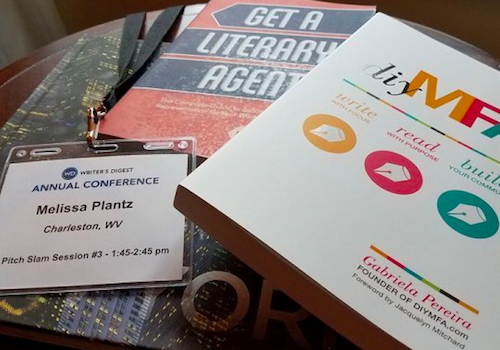
This past weekend, NaNoWriMo sent last year’s Donation Day Grand Prize winner Melissa Plantz to the 2017 Writer’s Digest Conference in New York City. After a packed schedule full of workshops and events, Melissa reflects on the courage it took to make the trip and the things she learned along the way:
When Grant Faulkner, the Executive Director for NaNoWriMo, emailed to inform me I’d won the Grand Prize for Double Up Donation Day in November of last year, I was elated.
And terrified.
I’m a writer, and just like many other writers around the world, I am an introvert. As in this gal doesn’t go to Walmart because of the crowds. New York City? Oh, my.
I was also pregnant at the time, which meant come August I would leave my five-month-old baby to attend the Writer’s Digest Conference. Could I leave her for three days?
I took a deep breath and with trembling hands, I emailed Grant. Yes, I would go. My internal critic screamed worries and fears for the next eight months. But, I did it anyway.
It was a weekend of Firsts: The first time flying in an airplane, the first time in NYC, the first time attending a writer’s conference, the first time pitching my dark YA paranormal to agents and editors, and the first time leaving my precious baby girl with her grandmother and older sister.
I attended sessions to strengthen my craft and learned from such masters as Hank Phillippi Ryan, Paula Munier, Jane K. Cleland, and Jennifer De Chiara. I made some friends.
And I didn’t die.
My characters needed me to take the necessary baby steps out of my comfort zone to properly tell their story and ask for feedback from the experts in YA. My inner critic battled with my characters all weekend, vying for attention.
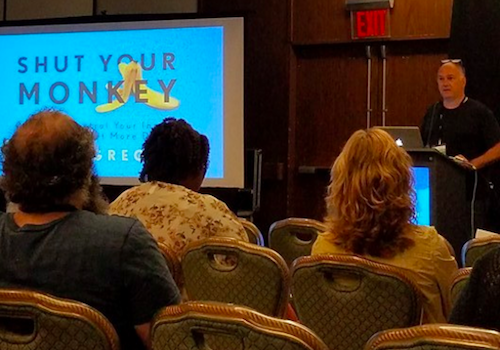
One of the sessions I attended on Saturday was led by Danny Gregory, author of Shut Your Monkey. It was the perfect class before my Pitch Slam. Familiar to many fellow NaNoWriMo’ers is the incessant voice that whispers in our heads, warning us of danger and filling us with doubt and worry.
Mr. Gregory refers to his inner critic as a monkey. Yours could be a different creature, but it helped me to view that imaginary voice as a separate entity, especially before pitching my book.
The keynote speakers and the presenters were amazing. Lisa Scottoline’s opening talk struck a chord with me as she spoke about how she came to the business of writing books so she could stay home with her baby girl. She talked about how the struggle was worth it and how we must persevere.
Ms. Scottoline used the analogy of a lit candle. The flame––the light––represents our writing, our creativity, our work. You have to protect your candle from the negativity and the priorities of others that threaten to extinguish your flame.
During her talk, I realized I have to protect my candle from not only others, but defend it from self-sabotage.
Every evening during the conference, and the next few days after the event, I spent time decompressing. As an introvert, the nervous energy from Pitch Slam alone drained me for hours.
But, I’d do it again.
I plan to attend next year. I missed one session led by Gabriela Pereira titled, “Rock Your Revisions” that I had looked forward to the entire weekend and I am still disappointed. Hopefully, she will attend next year.
I left the conference feeling on top of the world.
And kicked my monkey to the curb.

Melissa Plantz chose to stay home full time with her nine-year-old son Draven and baby girl Arwynn after working as a pharmacy technician for almost two decades. She lives in Charleston, WV, with her husband and two youngest children, and is also the mother to three grown book lovers. She writes YA Paranormal and Horror. Connect with her on Twitter @TheWritePlantz.
Chris Baty's Blog
- Chris Baty's profile
- 63 followers



